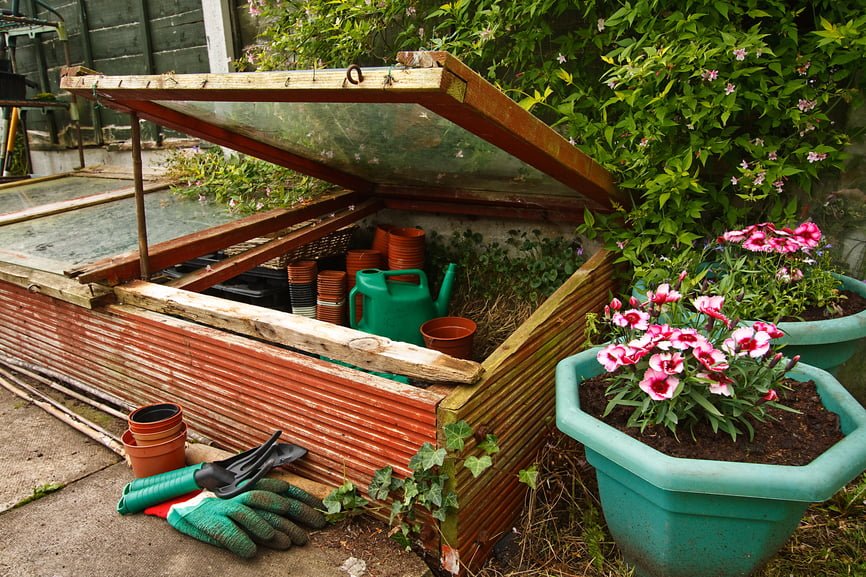 Cold frames are a practical and effective way to continue gardening throughout the harsh Utah winter. Cold frame gardening has been a secret of sorts, used for decades by commercial growers, but is quickly becoming a favorite of home gardeners across the country. This technique offers many significant benefits, especially compared to indoor growing techniques. Building your own cold frame garden is simple and fun and will allow you and your family to enjoy your garden all year long.
Cold frames are a practical and effective way to continue gardening throughout the harsh Utah winter. Cold frame gardening has been a secret of sorts, used for decades by commercial growers, but is quickly becoming a favorite of home gardeners across the country. This technique offers many significant benefits, especially compared to indoor growing techniques. Building your own cold frame garden is simple and fun and will allow you and your family to enjoy your garden all year long.
What is Cold Frame Gardening
Technically a cold frame is any enclosed box or structure built close to the ground with a transparent cover or roof. They differ from greenhouse only in that a greenhouse is heated whereas a cold frame is not. It can be made entirely of glass, Plexiglas or other clear material, or from a combination of wood, brick, block or metal with a clear top. These structures create a microclimate that insulates and shelters plants from harsh weather while taking advantage of the sun’s warmth. Use cold frames to extend your fall harvest, to get a jump on spring planting and to grow cold-hardy plants outdoors all winter long.
How to Build a Cold Frame
You can purchase kits online and from local garden centers but many gardeners enjoy building their own cold frame systems. Use wood to build a frame one to two feet high, then attach old windows or shower doors to the top using hinges. Use pavers or bricks as a base, to prevent wood rot and other problems that can occur from soil-to-wood contact. Build your frames so that they slope slightly from top to bottom and orient them toward the south, so that they take best advantage of the sun’s winter angle. For best results, choose a location that has good drainage. You can add heating cables or grow lights to expand the types of plants you grow and even build special bulb frames to enjoy colorful flowers all year. Ideal frame size is between 2’ x 4’ and 3’ by 6’. Any smaller and it won’t hold much; any larger and you begin to lose insulating properties.
Plants that Work Well in Cold Frames
Some gardeners like to grow spinach, arugula and other lettuce varieties in their winter frames. Kale, chard, cabbage and Chinese cabbage all do well in these conditions. Beets and green onions are said to be even more flavorful when grown in colder conditions. Finally, mustard, radish and broccoli are good choices for your first cold frame system, as these varieties are particularly hardy. For flowering options, choose any bulb that would normally withstand the winter in the ground. This could include amaryllis, iris, hyacinth and tulip. Lilies are one type to avoid however, due to their fragile nature.
Many gardeners have made cold frames a permanent part of their growing practices. In the Salt Lake area, Millcreek Gardens offers a variety of supplies to support your garden throughout the year. Talk with their experienced staff for suggestions and advice that will help you get your cold frames up and growing this winter.


